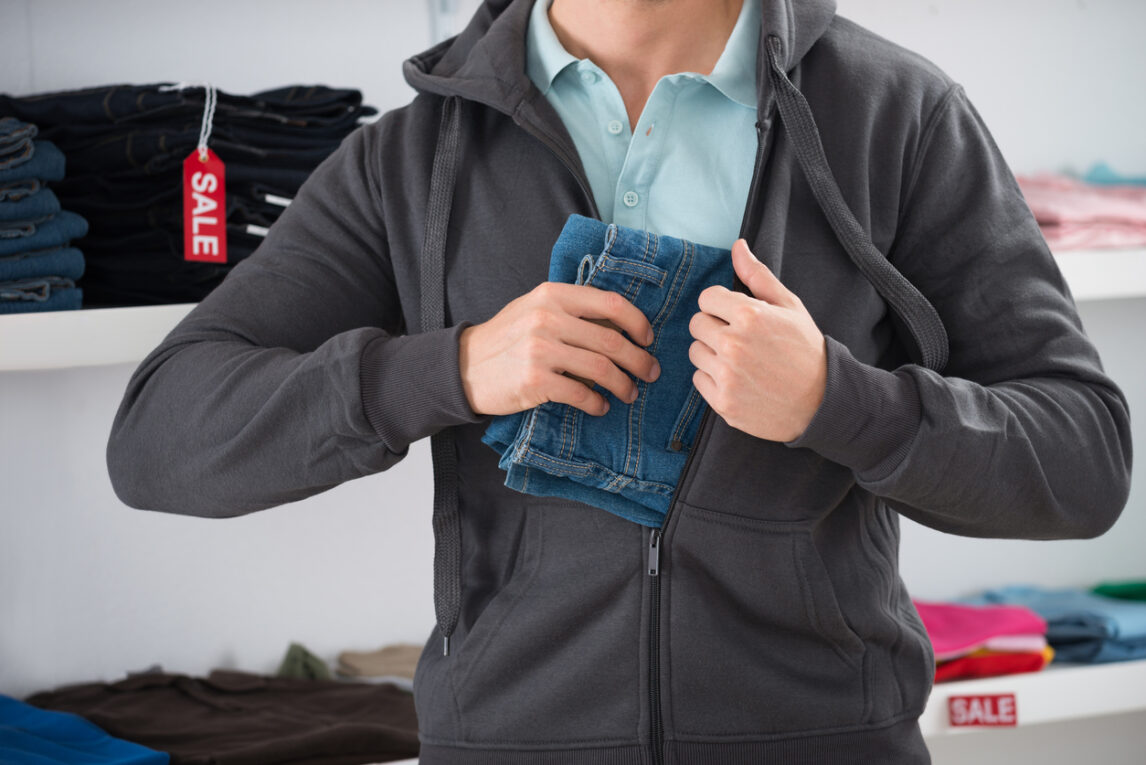The UK has recently been hit by a wave of shoplifting, as reported by the media. The prevailing theory attributes this surge to the cost of living crisis and ineffective police responses, which have led to a crime wave. However, it is important to consider the context: shoplifting rates had actually declined by 60% during the pandemic. Therefore, reports highlighting year-on-year changes can be misleading.
Many other types of crimes have remained below pre-pandemic levels due to the increase in remote working. However, as we returned to our pre-pandemic shopping habits in 2023, shoplifting found a perfect cover and has now surpassed pre-pandemic levels.
In the first half of 2023, reported shoplifting incidents averaged 7% higher than the expected pre-pandemic level. This number further increased to 20% during the summer months. Nonetheless, it is crucial to note that the available data suggests the rise in shoplifting is not as dramatic as some accounts would have us believe. Blaming the cost-of-living crisis for the increase does not align with certain facts. Notably, shoplifting by dependent drug users cannot be attributed to the cost-of-living crisis.
Moreover, when high-end retailers like John Lewis report thefts of their products, it implies the involvement of organized gangs looking to make a profit. This contradicts the notion that shoplifting is solely a result of the cost-of-living crisis. Alternatively, it is plausible to consider organized crime as a major factor behind the increase in shoplifting incidents.
The pandemic has also influenced the rise in shoplifting through its impact on online shopping. The shift towards e-commerce has made it easier for stolen goods to be fenced online, driving the shoplifting trend. Online marketplaces provide a more efficient and less risky platform for e-fencing compared to traditional face-to-face methods.
As a result, some criminal gangs now steal specific items upon request. Recent estimates suggest that stolen and counterfeit goods account for approximately 10% of products available on online marketplaces. Additionally, the expansion of the retail sector has led to an increased availability of valuable products in large self-service stores. With fewer staff between potential thieves and exits, these items have become more vulnerable to theft.
In the long run, the changing landscape of the retail sector inadvertently promotes shoplifting. While more evidence is needed, organized crime provides a plausible explanation for the increase in post-pandemic shoplifting. It is important to recognize that the police have not been required to attend low-value shoplifting offenses for many years. This reflects a longstanding issue of certain shops relying on police resources without taking responsibility for preventing thefts.
Therefore, it is crucial to question whether taxpayers should bear the burden of these thefts or if retailers should take more responsibility, just as businesses are increasingly being held accountable for carbon emissions.
Similar to the prevention of pollution, reducing shoplifting opportunities can be achieved. Blaming the police diverts some of the blame, but it fails to address the root cause of the problem. In 2023, reports claimed that items like cheese, meat, and coffee were being locked away or tagged. Yet, the truth is that these items have been popular targets for theft for many years, and anti-theft measures like tagging have long been in place.
Over the years, there has been continuous improvement in retail security measures. As early as 2010, research identified 30 measures employed to prevent theft, including locking cabinets, radio frequency tagging, tethering items, and using dummy goods. As time passes, security measures can become more elegant and unobtrusive. For instance, wide aisles with clear sight-lines and clever packaging designs can make it difficult for thieves to conceal stolen items.
These incremental security measures have proven effective in reducing car crime and burglary, with a 75% reduction since 1992. The introduction of integrated locks on high-quality doors and invisible car security triggered by key fobs has played a significant role. Consequently, fewer young people are entering the criminal justice system. Generally, shoppers are supportive of crime reduction and safety promotion measures, even if they cause minor inconveniences, such as removing security tags at checkout.
It is important to acknowledge the impact of social media in exacerbating the shoplifting issue. Videos glamorizing shoplifting and providing tips on how to do it spread rapidly, as information now travels globally within seconds. TikTok explainer videos, for example, have been linked to a surge in thefts of Kia and Hyundai cars in the US. The situation only improved when the car manufacturers released a software update. Flash mobs organizing thefts in London’s Oxford Street stores have also been coordinated through social media platforms.
Social media platforms have the technical capabilities to develop measures that can impede the spread of illegal videos and make them less appealing to create and watch. Although not an easy task, evidence suggests that offenders will not simply find ways to circumvent bans on illegal videos. To combat shoplifting effectively, it is essential to gather accurate information about the problem. Prevention efforts should specifically target the small proportion of shops that experience disproportionately high levels of shoplifting and the small number of popular products that attract thieves.
As for e-fencing, online eCommerce platforms are best positioned to prevent such activities, while social media platforms can disrupt provocateurs. The government’s role should be to incentivize private sector entities to take action through measures like tax breaks for implementing security measures or the threat of regulation and fines.
In conclusion, the surge in shoplifting cannot be solely attributed to the cost of living crisis or ineffective police responses. Organized crime and the shift towards online shopping have played major roles in amplifying the problem. By implementing effective security measures, both physical and digital, and encouraging collaboration between stakeholders, it is possible to prevent shoplifting and safeguard businesses and communities alike.

